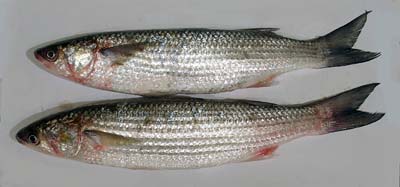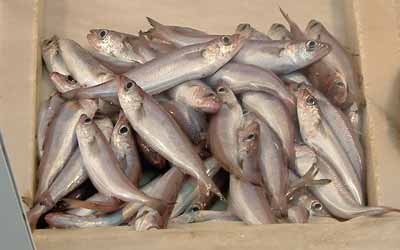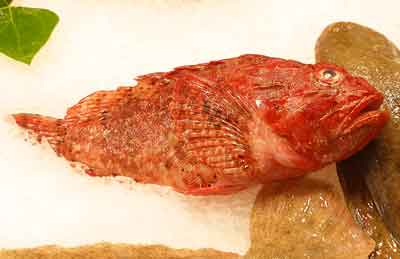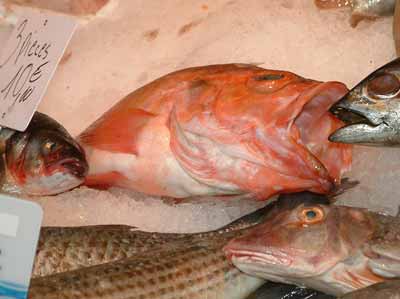
Grey mullet, the commonest and largest of the grey mullet (US: striped mullet) family. It is a silver, shoal-living fish pointed with dark grey which feeds on seaweed and plankton near the muddy bottom in estuaries and coastal waters. This can effect its flavour. However, a good grey mullet, caught in clean water, is round-bodied and has creamy white flesh and good flavour with good keeping capabilities. It must be thoroughly scaled before eating. Varieties are found all over the world. The roe is used for taramasalata, botargo, boutargue.

Atherine, Mediterranean silverside or sandsmelt. A common Mediterranean marine fish, usually deep-fried, it is a small, silvery fish similar to the argentine. When tiny it is treated in the same way as whitebait. This fish grows up to 15 cm.
A small cake made from numerous layers of phyllo pastry cut into a square and stuffed with crushed cashew nuts. A cross is then cut into the top so that it opens into a pyramid shape as it cooks.

Bluemouth. A type of rascasse from deep North American waters and the western Mediterranean. It has a blue flash on the gill covers and enormous eyes. It is an unsightly fish with good flavour and is used in bouillabaisse and other fish soups.
Rascasse or black scorpion fish. This is a smaller and less glamourous fish than the red scorpion fish, and is well camouflaged, in blacks, greens and browns. However, it is just as useful in a bouillabaisse.

Rascasse. Red scorpion fish. A fish similar to a gurnard, mainly red or orange in colour, with a huge, ugly head and poisonous spiny dorsal fins. The large scaly head is inedible. However, this well-flavoured fish is most famous as an indispensable ingredient of bouillabaisse. It is found in deep waters throughout the Mediterranean and as far north as Brittany. Large fish may be baked, providing firm white flesh.
A Tunisian spirit made from figs and drunk throughout north Africa. The figs most commonly used are Hordas figs from Turkey.